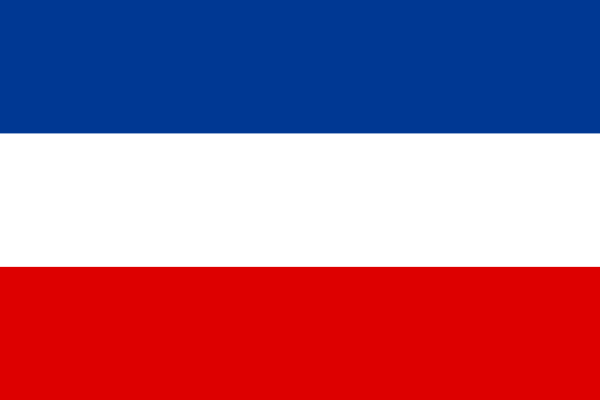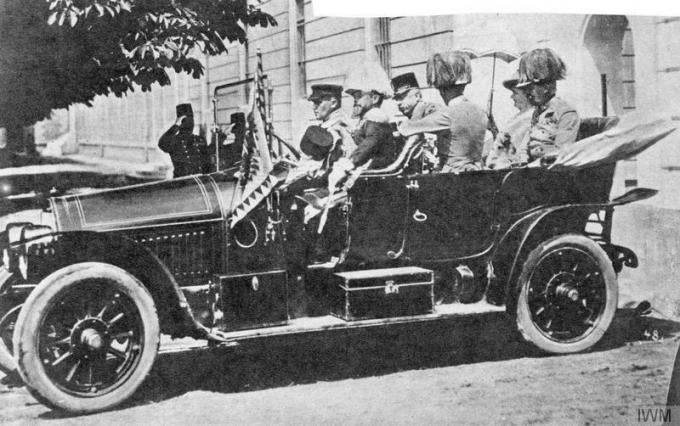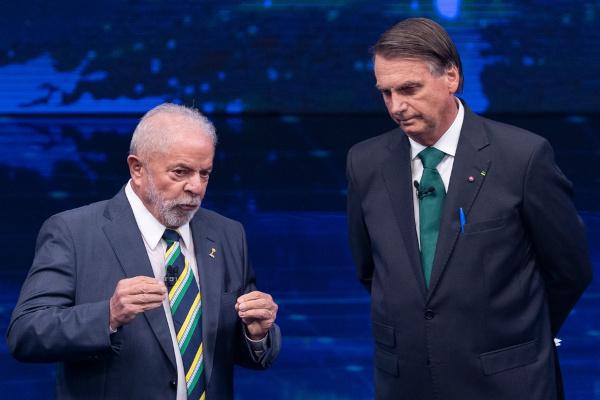O pan-Slavism was a movement that sought to unite people of Slavic origin in the Balkan region of Eastern Europe.
It was developed by Russia, which provided full support to the conflicts in the name of such a movement. In that country, in the middle of the 19th century, pan-Slavic ideology already demonstrated nationalism and the Russian bourgeoisie's desire for conquest. In this way, this class would put its expansionism into practice and would have access to the Mediterranean Sea by obtaining coastal portions of the countries bathed by it.
A similar movement took place in other parts of Europe: pan-Germanism, a movement and ideology that sought to unify the Germanic people on the continent. The two movements were responsible by the First World War.
Read too: What were the causes of the First World War?
Topics in this article
- 1 - Summary of Pan-Slavism
- 2 - What was pan-Slavism?
- 3 - Objectives of Pan-Slavism
- 4 - Characteristics of Pan-Slavism
- 5 - Pan-Slavism and the First World War
- 6 - Differences and similarities between Pan-Slavism and Pan-Germanism
Summary about Pan-Slavism
- Pan-Slavism was a movement and ideology of unification of the Slavic peoples.
- Its objective was, in addition to the union of these peoples, the expansion of Russia, giving it access to the Mediterranean.
- The main characteristics of pan-Slavism were: nationalism, the attempt to unite the Slavic peoples in the Balkan region and Russian expansionism.
- Pan-Slavism as well as Pan-Germanism are fundamental concepts for understanding the beginning of the First World War.
- While pan-Slavism preached the union of Slavic peoples, Pan-Germanism preached the union of Germanic peoples. Both movements were nationalist and had expansionist interests.
What was pan-Slavism?
Pan-Slavism, like Pan-Germanism, was a nationalist movement that sought the unification of all Slavs. Its main objectives were the expansion of its territories and direct access to the Mediterranean Sea for military and commercial purposes. The Slavs have Russian origins, but over time they spread through Eastern Europe.
What made pan-Slavism different was its leadership by Russia. This was its greatest defender, as it had economic interests in the Slavic unity of the Balkan region, in order to have access to the Mediterranean Sea, which would facilitate its economic transactions.
Do not stop now... There's more after the advertising ;)
Goals of Pan-Slavism
The objectives of pan-Slavism were: the expansion of the Russian Empire across the European continent and its control in the Balkan region, so that the Russians would have access to the Mediterranean Sea.

Features of Pan-Slavism
- He defended the union of the Slavic peoples.
- It occurred in Eastern Europe.
- It included countries under the rule of the Austro-Hungarian Empire.
- Nationalist ideal.
- Russian leadership.
Read too: After all, what is nationalism?
Pan-Slavism and the First World War
Pan-Slavism and Pan-Germanism were nationalist ideologies and movements that heightened war tensions before the First World War. O Pan-Slavism was directly responsible for the assassination of Archduke Franz Ferdinand, which constituted the trigger for the First War.
Franz Ferdinand was an Archduke of Austria, head of the Cadet branch of Austria-Este and possible heir to the throne of the Austro-Hungarian Empire. He was murdered on June 28, 1914, alongside his wife, in Sarajevo, capital of the Austro-Hungarian province of Bosnia and Herzegovina. Those responsible for the attack were members of the nationalist group Mão Negra.

The Black Hand was one of the radical groups within Pan-Slavism, as it lent itself to carry out the ideology at all costs, whether through murder, as in the case of the archduke and his wife, or through other actions later characterized as terrorist.
Its members declared themselves nationalists, and had the intention of uniting not only people but also the territories with South Slavic populations annexed by Austria-Hungary. In this way, they were in permanent conflict with the empire, as it dominated Bosnia and Herzegovina, territory that, due to pan-Slavism, would need to be associated with the Serbian State, which would still be created.
Thus, the murder was a political act to generate a break in the ties of the Slavic provinces of Austria-Hungary and, thus, promote their reunion with Greater Serbia or Yugoslavia.
Francisco Ferdinand was at the time making a peace visit, but he noticed military maneuvers and opened a museum in Sarajevo. The objective of the Austro-Hungarian Empire was to make the visit serve as one of the actions in favor of reforming itself, federalizing territories (Bosnia specifically), in addition to stopping expansionism in the East European.
However, after the murder, the Austro-Hungarian Empire did not accept Serbia's mild reaction to the crime, generating a serious diplomatic crisis, as evidence was demonstrated that there were military servants behind the attack, in addition to the Black Hand. So the Austro-Hungarian Empire gave them an ultimatum. As the demands were not met, Russia sided with the Slavs, Germany with the Germans, and a war began.
Differences and similarities between Pan-Slavism and Pan-Germanism
Pan-Slavism sought the unification of all Slavic peoples, with Russian support, culminating in the creation of Greater Serbia. In contrast, the Pan-Germanism had anti-Semitic characteristics and advocated the union of Germanic peoples of Central Europe, with Germany as the central figure. The similarities were seen in the expansionist character of both sides and in the feeling of unification of their respective peoples.
Sources:
HOBSBAWM, Eric. The age of revolutions: 1789-1848. Rio de Janeiro: Paz & Terra, 2014.
______. The era of capital: 1848-1875. Rio de Janeiro: Paz & Terra, 2014.
______. The age of empires: 1875-1914. Rio de Janeiro: Paz & Terra, 2014.
VICENTINO, Claudio. DORIGO, Gianpaolo. General and Brazilian History. Scipione. São Paulo: 2011.
Would you like to reference this text in a school or academic work? Look:
BARBOSA, Mariana de Oliveira Lopes. "Pan-Slavism"; Brazil School. Available in: https://brasilescola.uol.com.br/historiag/pan-eslavismo.htm. Accessed September 21, 2023.
Click here and learn about pan-Germanism as a fundamental movement and ideology to understand...
Discover Pan-Slavism, a fundamental concept for understanding the First World War. Check out...
Click here, find out what the League of Nations (Society of Nations) was, learn about its objectives...


